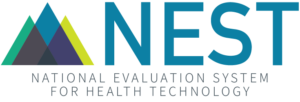January 7, 2021
This Test-Case assessed the feasibility of using real-world data (RWD) captured through the NESTcc Research Network to conduct proactive post-market surveillance for safety for class II medical devices. Specifically, this Test-Case evaluated the effectiveness of lumbar interbody systems within Lahey Hospital and Medical Center, a NESTcc Network Collaborator.
Several experts and partners for this Test-Case joined the NEST Forum. Below are some key findings from their presentation:
The goal of this Test-Case was to evaluate the feasibility of using RWD to assess medical device safety and effectiveness.
Lahey Hospital & Medical Center’s Dr. Frederic S. Resnic outlined the aims of this Test-Case in his presentation: “The goals of this initial phase of the project were to validate the data warehouse capabilities to enable efficient surveillance of the data and the safety of lumbar intervertebral body implants (IVBI). We needed to validate that we could get the device exposures, risk factor identification, and outcomes that were deemed necessary to study the safety of this device. We also wished to describe the cohort of patients who were treated with IVBI at our facilities and to apply an active surveillance method to assess risk–adjusted IVBI safety outcomes.”
The results of this Test-Case are relevant for patients, regulators, and device manufacturers.
Dr. Paul Coplan from Johnson & Johnson discussed the merits of this Test-Case for stakeholders across the medical device manufacturing ecosystem: “Why is the study relevant? Well, we’ve seen a number of examples in medical devices where real-world evidence (RWE) in the form of registries has been used for label extensions or for personal safety surveillance. But figuring out how RWE outside of registries can be used to assess patient outcomes is important for patients, regulators, and companies who perform post–marketing surveillance to unlock huge amounts of real-world data that is collected in electronic health records (EHR), hospital claims, or other usual care practice records to understand the safety and effectiveness of medical devices.”
This NEST Test-Case transforms the concept of RWD to a real-life application for intervertebral body fusion devices.
Dr. Ronald Jean, FDA, closed the presentation by highlighting the importance of this Test-Case to the future of post–market surveillance for medical devices: “This study was intended to evaluate whether real-world evidence could enhance device post–market surveillance, and there was no outstanding safety or effectiveness question related to the devices in this Test-Case. While the generation of real-world data holds multiple applications where data collection is reliable and relevant, in this case the results may serve to validate the safety and effectiveness of the devices under study, as well as lead to labeling changes, or serve as surrogate data for other marketing applications or device refinements down the road.”
Thank you to the experts who joined us for this conversation on the feasibility of using RWD to assess the safety and effectiveness of medical devices. We look forward to continued conversation and collaboration on important issues to the medical device ecosystem.
The NEST Forum shared insights and perspectives on NEST’s use of real-world data to move safety and innovation forward and help change the paradigm of clinical research. We are grateful for the medical device ecosystem leaders who joined us and look forward to continued conversation and collaboration on issues of pressing importance to health care.
All session recordings are available on the NEST Forum event page.


